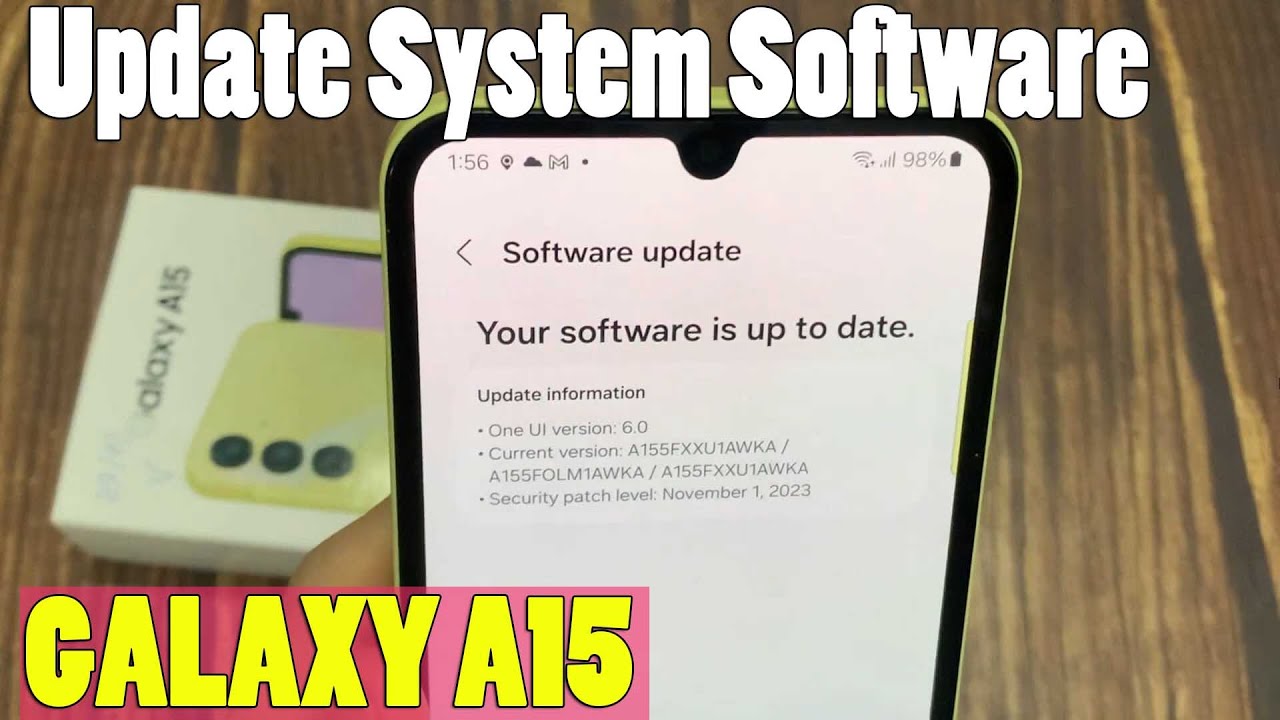Keeping your Samsung Galaxy device updated ensures optimal performance, enhanced security, and access to the latest features. This comprehensive guide walks you through the process of updating your device’s software, whether automatically, manually, or using Samsung’s Smart Switch.
Why Software Updates Matter
Regular software updates:
- Enhance Security: Protect your device against vulnerabilities.
- Improve Performance: Fix bugs and optimize system operations.
- Introduce New Features: Access the latest functionalities and user interface improvements.
Preparing for the Update
Before initiating an update:
- Charge Your Device: Ensure your battery is at least 50% charged.
- Connect to Wi-Fi: Use a stable Wi-Fi connection to avoid data charges and ensure a smooth download.
- Free Up Storage: Make sure there’s sufficient storage space; updates can be several gigabytes in size.
- Backup Your Data: Although updates typically don’t affect personal data, it’s prudent to back up important information.
Method 1: Updating via Device Settings
- Open Settings: Tap the Settings icon on your home screen or app drawer.
- Navigate to Software Update: Scroll down and select Software update or System updates.
- Check for Updates: Tap Download and install. Your device will search for available updates.
- Download the Update: If an update is available, follow the on-screen instructions to download it.
- Install the Update: Once downloaded, tap Install now. Your device will restart and begin the installation process.
Note: Some updates may offer options to schedule the installation during off-peak hours.
Method 2: Using Samsung Smart Switch
Samsung’s Smart Switch allows you to update your device via a computer.
- Download Smart Switch: Install Smart Switch on your PC or Mac from
- Connect Your Device: Use a USB cable to connect your Samsung Galaxy device to your computer.
- Launch Smart Switch: Open the Smart Switch application on your computer.
- Check for Updates: If an update is available, Smart Switch will prompt you.
- Update Your Device: Follow the on-screen instructions to download and install the update.
Note: Ensure your device remains connected during the entire process.
Method 3: Manual Update via Firmware
For advanced users, manually updating using official firmware is an option. This method is more complex and carries risks if not done correctly.
- Download Firmware: Obtain the official firmware for your specific device model from a trusted source.
- Use Odin Tool: Utilize the Odin software on your PC to flash the firmware onto your device.
- Follow Instructions Carefully: Adhere strictly to the flashing instructions to avoid potential issues.
Warning: Incorrectly flashing firmware can lead to device malfunctions. Proceed only if you’re confident in the process.
Troubleshooting Common Issues
- Update Not Available: Updates roll out in phases. If not immediately available, check again later.
- Insufficient Storage: Free up space by deleting unnecessary files or apps.
- Battery Too Low: Charge your device to at least 50% before attempting an update.
- Update Fails to Install: Restart your device and try again. If issues persist, consider using Smart Switch or seeking professional assistance.
Post-Update Tips
- Explore New Features: Familiarize yourself with any new functionalities introduced.
- Check App Compatibility: Ensure your apps are updated to work seamlessly with the new software version.
- Monitor Device Performance: Observe your device’s behavior post-update and report any anomalies to Samsung support.
Final Thoughts
Regularly updating your Samsung Galaxy device is crucial for security, performance, and access to the latest features. By following the methods outlined above, you can ensure your device remains up-to-date and functions optimally.






